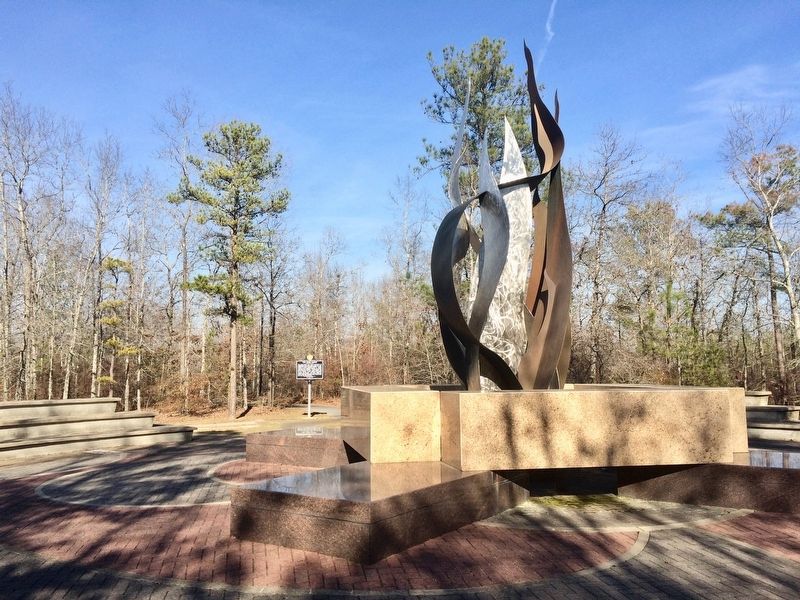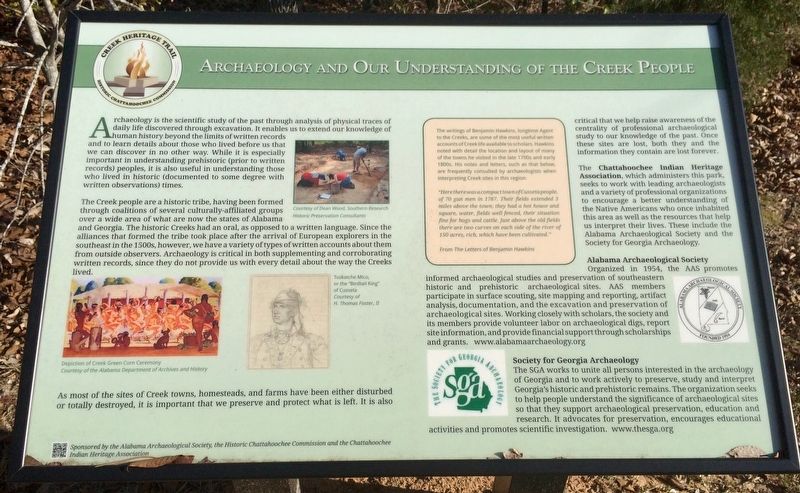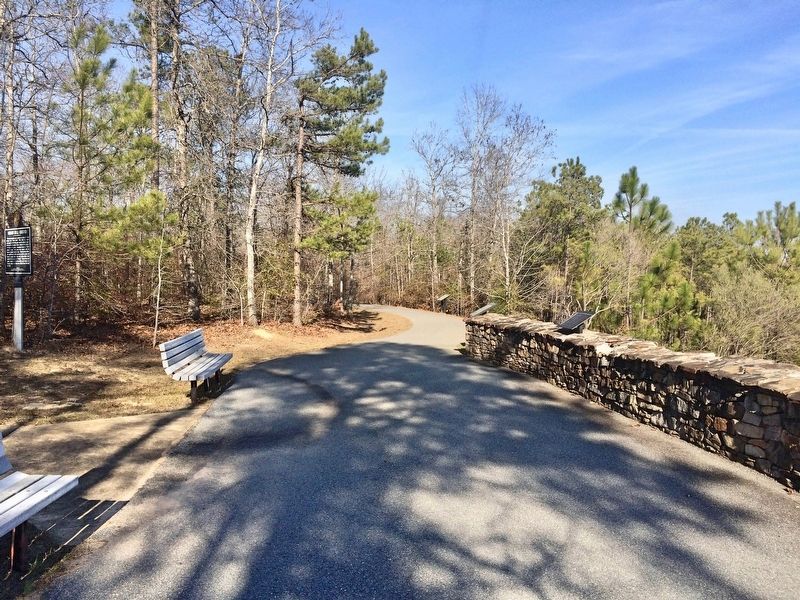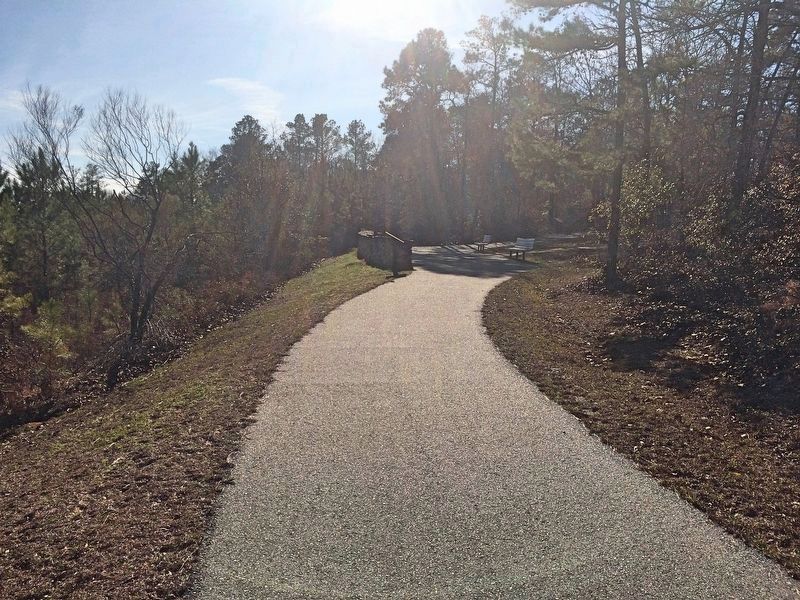Fort Mitchell in Russell County, Alabama — The American South (East South Central)
Archaeology And Our Understanding of the Creek People
— Creek Heritage Trail —
Inscription.
Archaeology is the scientific study of the past through analysis of physical traces of daily life discovered through excavation. It enables us to extend our knowledge of human history beyond the limits of written records and to learn details about those who lived before us that we can discover in no other way. While it is especially important in understanding prehistoric (prior to written records) peoples,it is also useful in understanding those who lived in historic (documented to some degree with
written observations) times.
The Creek people are a historic tribe, having been formed through coalitions of several culturally-affiliated groups over a wide area of what are now the states of Alabama and Georgia. The historic Creeks had an oral, as opposed to a written language. Since the alliances that formed the tribe took place after the arrival of European explorers in the southeast in the 1500s, however, we have a variety of types of written accounts about them from outside observers. Archaeology is critical in both supplementing and corroborating written records, since they do not provide us with every detail about the way the Creeks lived.
As most of the sites of Creek towns, homesteads, and farms have been either disturbed or totally destroyed, it is important that we preserve and protect what is left. It is also critical that we help raise awareness of the centrality of professional archaeological study to our knowledge of the past. Once these sites are lost, both they and the information they contain are lost forever.
The Chattahoochee Indian Heritage Association, which administers this park, seeks to work with leading archaeologists and a variety of professional organizations to encourage a better understanding of the Native Americans who once inhabited this area as well as the resources that help us interpret their lives. These include the Alabama Archaeological Society and the Society for Georgia Archaeology.
Alabama Archaeological Society
Organized in 1954, the AAS promotes informed archaeological studies and preservation of southeastern historic and prehistoric archaeological sites. AAS members participate in surface scouting, site mapping and reporting, artifact analysis, documentation, and the excavation and preservation of archaeological sites. Working closely with scholars, the society and its members provide volunteer labor on archaeological digs, report site information, and provide financial support through scholarships and grants. www.alabamaarchaeology.org
Society for Georgia Archaeology
The SGA works to unite all persons interested in the archaeology of Georgia and to work actively to preserve, study and interpret Georgia's historic and prehistoric remains. The organization seeks to help people understand the significance of archaeological sites so that they support archaeological preservation, education and research. It advocates for preservation, encourages educational activities and promotes scientific investigation. www.thesga.org
[Letter Insert]
The writings of Benjamin Hawkins, longtime Agent
to the Creeks, are some of the most useful written
accounts of Creek life available to scholars. Hawkins
noted with detail the location and layout of many
of the towns he visited in the late 1700s and early
1800s. His notes and letters, such as that below,
are frequently consulted by archaeologists when
interpreting Creek sites in this region.
"Here there was a compact town of Cusseta people,
of 70 gun men in 1787. Their fields extended 3
miles above the town; they had a hot house and
square, water, fields well fenced, their situation
fine for hogs and cattle. Just above the old fields
there are two curves on each side of the river of
150 acres, rich, which have been cultivated."
From The Letters of Benjamin Hawkins
[Photo Captions]
{Bottom left}: Depiction of Creek Green Corn Ceremony
Courtesy of the Alabama Department of Archives
and History
{Bottom middle}: Tuskatche Mico, or the "Birdtail King" of Cusseta
Courtesy of H. Thomas Foster, II
{Bottom right logos}
Alabama Archaeological Society (right)
Society for Georgia Archaeology (left)
Erected 2014 by the Alabama Archaeological Society, the Historic Chattahoochee Commission and the Chattahoochee Indian Heritage Association.
Topics. This historical marker is listed in these topic lists: Environment • Exploration • Native Americans • Settlements & Settlers. A significant historical year for this entry is 1954.
Location. 32° 20.65′ N, 85° 1.246′ W. Marker is in Fort Mitchell, Alabama, in Russell County. Marker can be reached from County Route 165, 2.3 miles south of Nuckols Road (Road 39). Marker is located to the back side of the Chattahoochee Indian Heritage Center Monument adjacent to Fort Mitchell National Historic Landmark Site. Touch for map. Marker is at or near this postal address: 561 Highway 165, Fort Mitchell AL 36856, United States of America. Touch for directions.
Other nearby markers. At least 8 other markers are within walking distance of this marker. Pokkecheta, or the Ball Play (a few steps from this marker); J.W. and Ethel I. Woodruff Foundation Interpretive Trail (a few steps from this marker); Indian Ball Ground (a few steps from this marker); Fort Mitchell and Creek Removal

Photographed By Mark Hilton, February 4, 2017
4. Sacred Fire sculpture, a few yards from the marker.
The focal point of the park is a 21-foot-high steel and bronze sculpture representing the Sacred Fire and town square that sat at the heart of every Creek town and is surrounded by other symbols sacred to the Creeks.
Credits. This page was last revised on March 8, 2017. It was originally submitted on March 7, 2017, by Mark Hilton of Montgomery, Alabama. This page has been viewed 503 times since then and 26 times this year. Photos: 1, 2, 3, 4. submitted on March 7, 2017, by Mark Hilton of Montgomery, Alabama.


